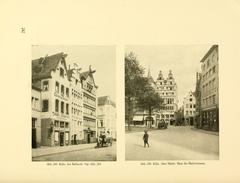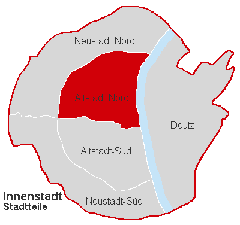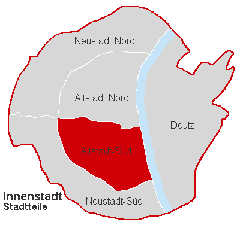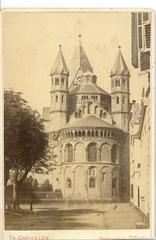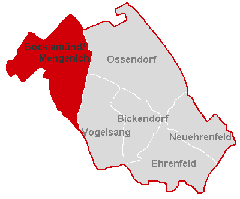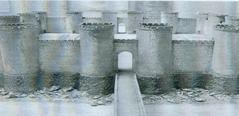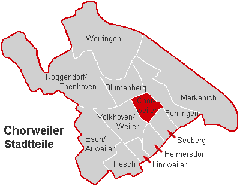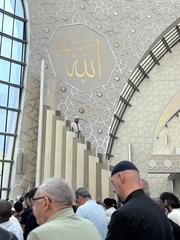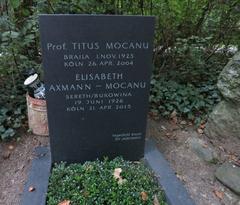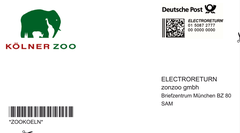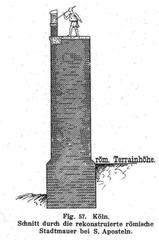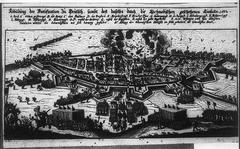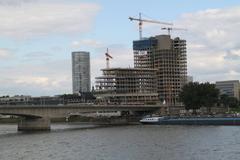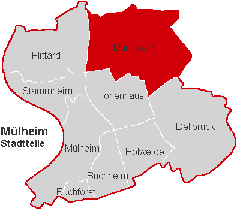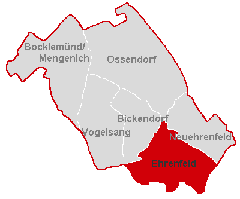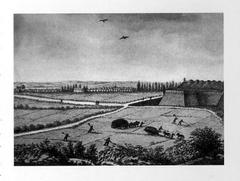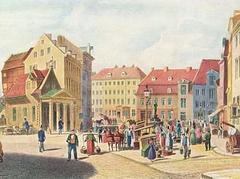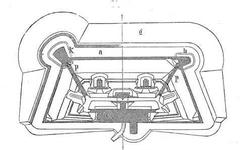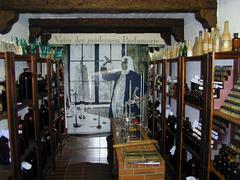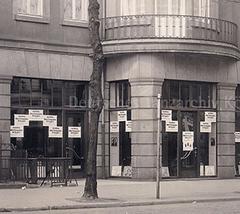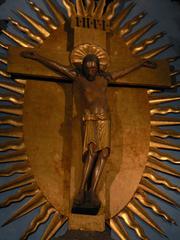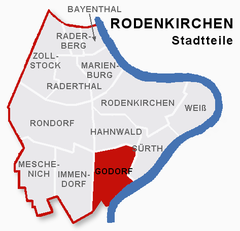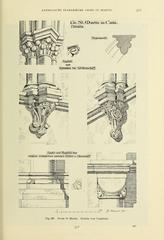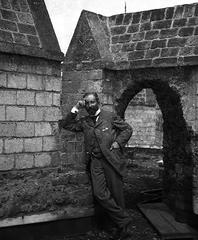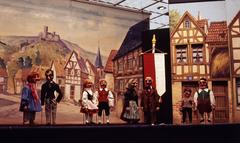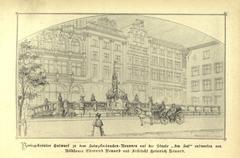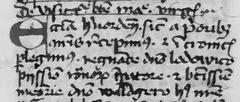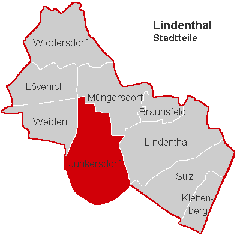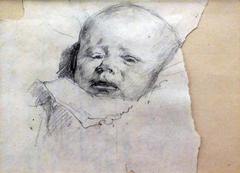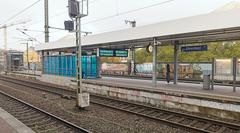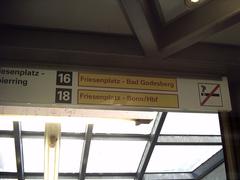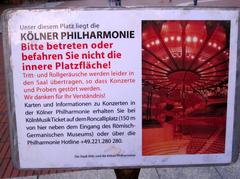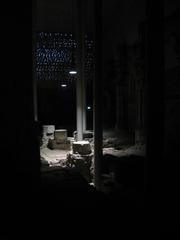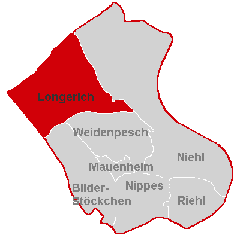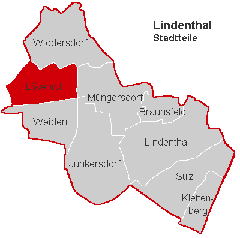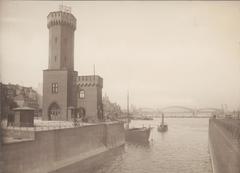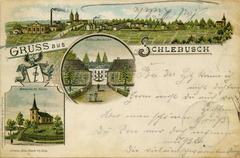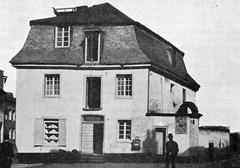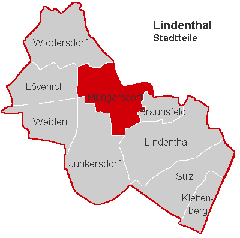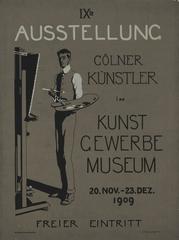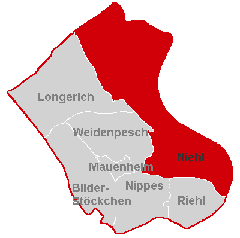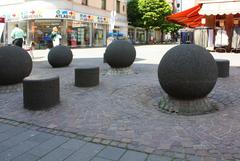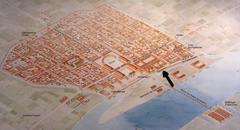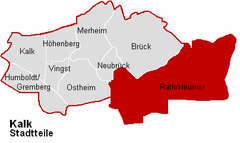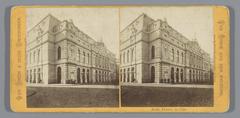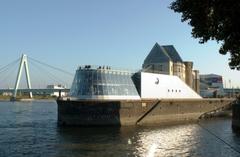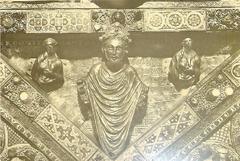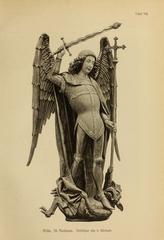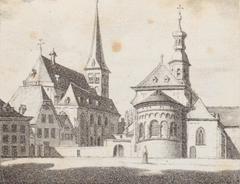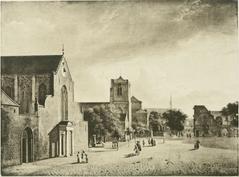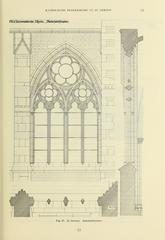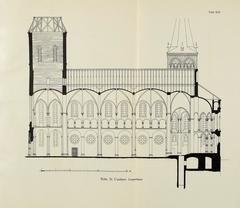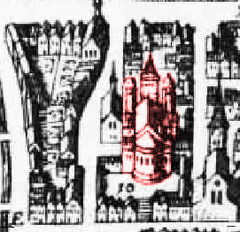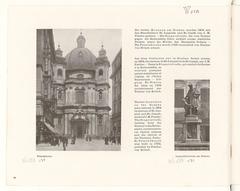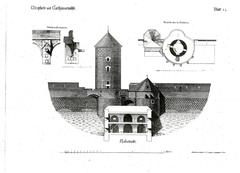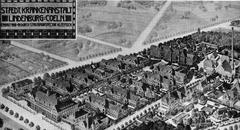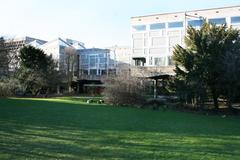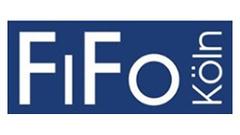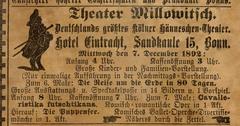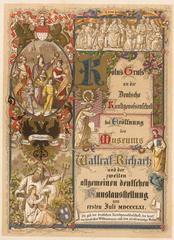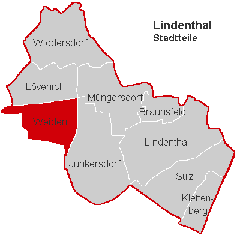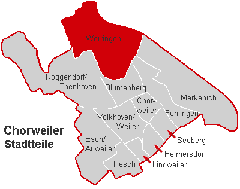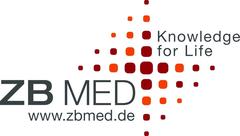Visiting Hours, Tickets, and Highlights of Museum Ludwig in Cologne
Date: 18/07/2024
Introduction
Museum Ludwig in Cologne, Germany, stands as a pivotal institution for modern and contemporary art, reflecting the cultural renaissance of post-war Germany. Founded through the remarkable generosity of collectors Peter and Irene Ludwig, the museum’s collection spans diverse art movements, including German Expressionism, Russian Avant-Garde, and American Pop Art. Situated near the iconic Cologne Cathedral, the Museum Ludwig’s architecture, designed by Peter Busmann and Godfrid Haberer, is a testament to the functionalist principles of Modernism, harmoniously integrating with the city’s historical context. This guide provides a comprehensive overview of the museum’s history, architectural significance, and practical visitor information. (Museum Ludwig)
Table of Contents
- [Introduction](#introductionintroduction)
- [Discover the History and Architectural Significance of Museum Ludwig in Cologne](#discover-the-history-and-architectural-significance-of-museum-ludwig-in-colognediscover-the-history-and-architectural-significance-of-museum-ludwig-in-cologne)
- [A History Forged in Post-War Germany](#a-history-forged-in-post-war-germanya-history-forged-in-post-war-germany)
- [The Legacy of Peter Ludwig](#the-legacy-of-peter-ludwigthe-legacy-of-peter-ludwig)
- [A Gift to Cologne](#a-gift-to-colognea-gift-to-cologne)
- [The Architectural Challenge](#the-architectural-challengethe-architectural-challenge)
- [Form Follows Function](#form-follows-functionform-follows-function)
- [Dialogue with History](#dialogue-with-historydialogue-with-history)
- [Light and Space](#light-and-spacelight-and-space)
- [Visitor Information](#visitor-informationvisitor-information)
- [Visiting Hours](#visiting-hoursvisiting-hours)
- [Ticket Prices](#ticket-pricesticket-prices)
- [Travel Tips](#travel-tipstravel-tips)
- [Nearby Attractions](#nearby-attractionsnearby-attractions)
- [Accessibility](#accessibilityaccessibility)
- [A Legacy of Art and Architecture](#a-legacy-of-art-and-architecturea-legacy-of-art-and-architecture)
- [Special Events and Guided Tours](#special-events-and-guided-toursspecial-events-and-guided-tours)
- [Photographic Spots](#photographic-spotsphotographic-spots)
- [FAQ](#faqfaq)
- [A History Forged in Post-War Germany](#a-history-forged-in-post-war-germanya-history-forged-in-post-war-germany)
- [Collections and Notable Exhibits](#collections-and-notable-exhibitscollections-and-notable-exhibits)
- [Modern Art](#modern-artmodern-art)
- [Expressionism](#expressionismexpressionism)
- [Russian Avant-Garde](#russian-avant-garderussian-avant-garde)
- [Picasso and Cubism](#picasso-and-cubismpicasso-and-cubism)
- [Post-War Art](#post-war-artpost-war-art)
- [American Pop Art](#american-pop-artamerican-pop-art)
- [Nouveau Réalisme](#nouveau-réalismenouveau-réalisme)
- [Contemporary Art](#contemporary-artcontemporary-art)
- [Photography](#photographyphotography)
- [Notable Exhibits](#notable-exhibitsnotable-exhibits)
- [Modern Art](#modern-artmodern-art)
- [Tips for Your Visit](#tips-for-your-visittips-for-your-visit)
- [Conclusion](#conclusionconclusion)
- [References](#referencesreferences)
Discover the History and Architectural Significance of Museum Ludwig in Cologne
Introduction
Nestled in the heart of Cologne, Museum Ludwig is a beacon of modern and contemporary art. This iconic institution not only showcases a remarkable collection but also stands as a testament to post-war Germany’s cultural resurgence. In this article, we delve into the rich history and architectural significance of Museum Ludwig, while also providing practical information for visitors.
A History Forged in Post-War Germany
The Museum Ludwig’s story is deeply intertwined with the city of Cologne’s own post-war narrative. After the devastation of World War II, Cologne, like many German cities, faced the daunting task of rebuilding not just its infrastructure but also its cultural identity.
The Legacy of Peter Ludwig
At the heart of the Museum Ludwig’s genesis is the remarkable collecting journey of Peter Ludwig (1925-1996) and his wife Irene. Hailing from a family with a history in the chocolate industry, Peter Ludwig’s passion for art, particularly modern and contemporary works, led him to amass an astounding collection.
His interest in American Pop Art, at a time when it was largely disregarded by European collectors, proved particularly significant. The Ludwigs’ collection grew to encompass a vast spectrum of art movements, including Russian Avant-Garde, Picasso’s works, and Expressionist masterpieces.
A Gift to Cologne
In 1976, a pivotal moment arrived when the Ludwigs decided to gift a significant portion of their collection to the city of Cologne. This generous act was motivated by their desire to make art accessible to a wider public and to contribute to the cultural resurgence of post-war Germany.
The Architectural Challenge
The decision to house this remarkable collection led to the construction of the Museum Ludwig, a project that itself reflects the spirit of post-war Germany. Designed by the architectural team of Peter Busmann and Godfrid Haberer, the museum building, completed in 1986, stands as a testament to the era’s architectural trends.
A Modernist Statement - The Building Itself
The Museum Ludwig’s architecture is a striking example of late 20th-century design, reflecting the functionalist principles of Modernism while engaging in dialogue with its historic surroundings.
Form Follows Function
The museum’s design prioritizes functionality, aiming to provide optimal spaces for exhibiting the diverse art collection it houses. The building’s modular layout, characterized by interconnected rectangular volumes, allows for flexible exhibition arrangements and a clear circulation path for visitors.
Dialogue with History
Situated in the heart of Cologne, near the city’s iconic cathedral, the Museum Ludwig’s architects were conscious of the need to create a building that both respected its historical context and asserted its own contemporary identity. The use of red sandstone for the facade, a material commonly found in Cologne’s Romanesque architecture, creates a visual link to the city’s past.
Light and Space
Natural light plays a crucial role in the museum’s design. Large windows, strategically placed throughout the building, flood the galleries with natural light, enhancing the viewing experience and creating a sense of openness. The interplay of light and shadow on the building’s facade adds to its visual dynamism.
Visitor Information
Visiting Hours
Museum Ludwig is open from Tuesday to Sunday, 10:00 AM to 6:00 PM. On the first Thursday of every month, the museum extends its hours until 10:00 PM.
Ticket Prices
General admission tickets cost €12, while discounted tickets for students and seniors are available for €8. Children under 12 can enter for free.
Travel Tips
The museum is easily accessible via public transportation. The nearest tram stop is ‘Heumarkt,’ serviced by lines 1, 7, and 9. Parking is available nearby for those traveling by car.
Nearby Attractions
While visiting Museum Ludwig, consider exploring other nearby historical sites such as Cologne Cathedral and the Roman-Germanic Museum. Both are within walking distance and offer additional insights into Cologne’s rich history.
Accessibility
Museum Ludwig is fully accessible to visitors with disabilities. Elevators, ramps, and accessible restrooms are available throughout the facility.
A Legacy of Art and Architecture
The Museum Ludwig stands today as a testament to the transformative power of art and the vision of its founders. Its architectural significance lies not only in its aesthetic qualities but also in its embodiment of post-war Germany’s aspirations for cultural renewal and its commitment to making art accessible to all. The building’s enduring legacy is a reminder that architecture can be both a reflection of its time and a catalyst for future generations to engage with art and history.
Special Events and Guided Tours
Museum Ludwig frequently hosts special exhibitions and events. Guided tours are available in multiple languages and can be booked in advance through the museum’s official website.
Photographic Spots
The museum’s striking architecture and thoughtfully designed galleries provide numerous photographic opportunities. Be sure to capture the interplay of light and shadow on the facade and the panoramic views of Cologne from the museum’s upper floors.
FAQ
What are the Museum Ludwig’s visiting hours?
The museum is open from Tuesday to Sunday, 10:00 AM to 6:00 PM, and until 10:00 PM on the first Thursday of every month.
How much are the tickets?
General admission is €12, with discounted tickets available for students and seniors at €8. Children under 12 enter for free.
Is the museum accessible?
Yes, Museum Ludwig is fully accessible, with elevators, ramps, and accessible restrooms.
Are guided tours available?
Yes, guided tours can be booked in advance through the museum’s official website.
Collections and Notable Exhibits
Museum Ludwig boasts an impressive collection of modern and contemporary art, making it a must-visit for art enthusiasts worldwide. The museum’s holdings span various movements, offering a comprehensive look at the evolution of art from the 20th century to the present.
Modern Art
Expressionism
Museum Ludwig houses a significant collection of German Expressionist art, with a particular focus on the group Der Blaue Reiter (The Blue Rider). Visitors can admire masterpieces by renowned artists such as:
- Wassily Kandinsky: Known for his pioneering abstract works, the museum features iconic paintings like “Improvisation 27” (1912) and “Small Pleasures” (1913).
- Franz Marc: A key figure in the movement, Marc’s vibrant depictions of animals, such as “The Fate of the Animals” (1913) and “Yellow Cow” (1911), are highlights of the collection.
- August Macke: Macke’s works, including “Turkish Café” (1914) and “Promenade” (1913), showcase his unique use of color and fascination with light and movement.
Russian Avant-Garde
The museum boasts an extensive collection of Russian Avant-Garde art, a movement that revolutionized artistic expression in the early 20th century. Key highlights include:
- Kazimir Malevich: A pioneer of geometric abstraction, Malevich’s iconic “Black Square” (1915) is a must-see, along with other Suprematist compositions.
- Alexander Rodchenko: Known for his innovative use of photography and graphic design, the museum features Rodchenko’s dynamic compositions like “Non-Objective Composition No. 80 (Black Circle)” (1918).
- Natalia Goncharova and Mikhail Larionov: These artists explored various styles, including Neo-Primitivism and Rayonism, as seen in works like “The Cyclist” (1913) by Goncharova and “Rayonist Landscape” (1913) by Larionov.
Picasso and Cubism
Museum Ludwig holds one of the most extensive collections of works by Pablo Picasso outside of Spain. Visitors can trace the evolution of Picasso’s groundbreaking Cubist style through a range of paintings, sculptures, and prints. Notable pieces include:
- “Harlequin with Folded Hands” (1923): This iconic portrait exemplifies Picasso’s mastery of Cubist fragmentation and reconstruction of form.
- “Woman with Artichoke” (1941): This sculpture showcases Picasso’s experimentation with materials and his ability to imbue everyday objects with artistic significance.
- “Les Demoiselles d’Avignon” (1907): While not part of the museum’s permanent collection, this seminal Cubist work is frequently loaned and exhibited, offering visitors a glimpse into the movement’s origins.
Post-War Art
American Pop Art
Museum Ludwig played a crucial role in introducing American Pop Art to Europe. The collection features iconic works by leading figures of the movement, including:
- Andy Warhol: The museum holds a vast collection of Warhol’s prints, including his famous depictions of Marilyn Monroe, Campbell’s Soup Cans, and Brillo Boxes.
- Roy Lichtenstein: Known for his bold, comic-strip-inspired paintings, Lichtenstein’s works like “M-Maybe” (1965) and “Takka Takka” (1962) are highlights of the Pop Art collection.
- Claes Oldenburg and Coosje van Bruggen: This artistic duo is renowned for their large-scale sculptures of everyday objects, such as “Spoonbridge and Cherry” (1985-1988), a whimsical landmark located outside the museum.
Nouveau Réalisme
Museum Ludwig also houses a significant collection of Nouveau Réalisme, a French art movement that emerged in the 1960s as a response to consumerism and mass media. Key artists represented include:
- Yves Klein: Known for his signature International Klein Blue, the museum features Klein’s monochrome paintings and Anthropometries, which involved using models’ bodies as “living brushes.”
- Arman: Arman’s accumulations, such as “Home Sweet Home” (1960), which encases everyday objects in resin, critique consumer culture and its excesses.
- Jean Tinguely: Tinguely’s kinetic sculptures, like “Meta-Matic No. 17” (1959), challenge traditional notions of art and engage viewers through their mechanical movements.
Contemporary Art
Museum Ludwig continues to expand its collection with contemporary artworks, reflecting the ever-evolving art world. The museum features rotating exhibitions and installations, showcasing emerging and established artists from around the globe. Visitors can expect to encounter a diverse range of media, including:
- Installation art
- Performance art
- Video art
- Digital art
Photography
The museum houses a dedicated photography collection, showcasing the medium’s evolution from its early days to the present. Visitors can explore works by renowned photographers, including:
- August Sander: A pioneer of documentary photography, Sander’s portraits of people from various walks of life offer a fascinating glimpse into early 20th-century German society.
- Cindy Sherman: Known for her self-portraits that explore themes of identity and representation, Sherman’s photographs challenge traditional notions of portraiture.
- Andreas Gursky: Gursky’s large-scale photographs, often depicting globalized landscapes and architecture, capture the overwhelming scale and complexity of the modern world.
Notable Exhibits
In addition to its permanent collection, Museum Ludwig hosts temporary exhibitions throughout the year, featuring works by renowned artists and exploring specific themes or art movements. These exhibitions offer visitors a chance to engage with a wider range of art and delve deeper into particular artistic practices.
To stay updated on current and upcoming exhibitions, visitors can visit the museum’s official website or inquire at the information desk upon arrival.
Tips for Your Visit
- Plan Ahead: Check the museum’s website for information on current exhibitions, events, and visitor guidelines.
- Optimal Visit Times: Consider visiting early in the morning or later in the afternoon to avoid crowds.
- Guided Tours: Take advantage of the free guided tours or audio guides to enhance your understanding of the artworks.
- Comfort: Wear comfortable shoes and leave large bags at the museum’s cloakroom.
- Photography: Photography for personal use is permitted in the permanent collection, but flash photography and selfie sticks are not allowed. Photography and filming are not permitted in temporary exhibitions.
- Relaxation: Take some time to relax and enjoy the museum’s café or the nearby Rhine River after your visit.
Conclusion
Museum Ludwig offers a unique blend of historical and architectural significance that both locals and tourists can appreciate. Plan your visit today to explore this cultural gem in Cologne. For more information, visit the official Museum Ludwig website or follow them on social media for updates.
References
- Discover the History and Architectural Significance of Museum Ludwig in Cologne. (2024). Retrieved from Museum Ludwig
- A Comprehensive Guide to Museum Ludwig - Collections, Tickets, and Visiting Hours. (2024). Retrieved from Museum Ludwig
- Complete Guide to Visiting Museum Ludwig in Cologne - Hours, Tickets, and Tips. (2024). Retrieved from Museum Ludwig
